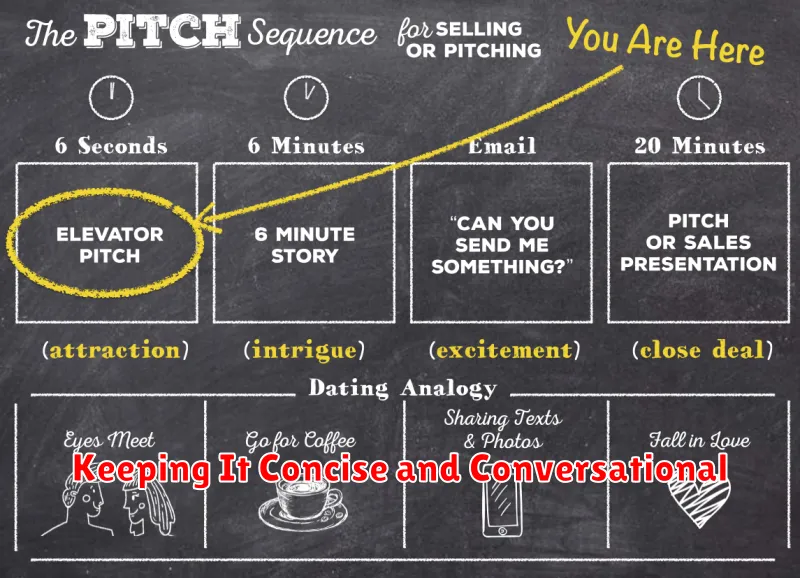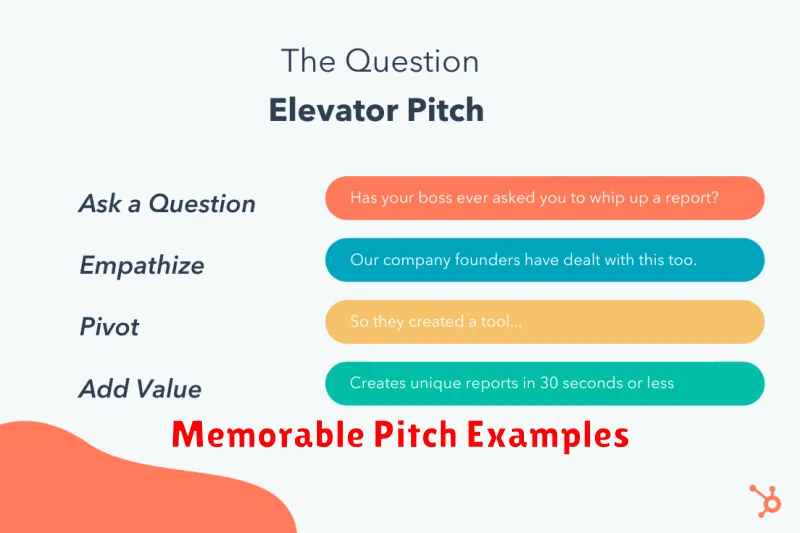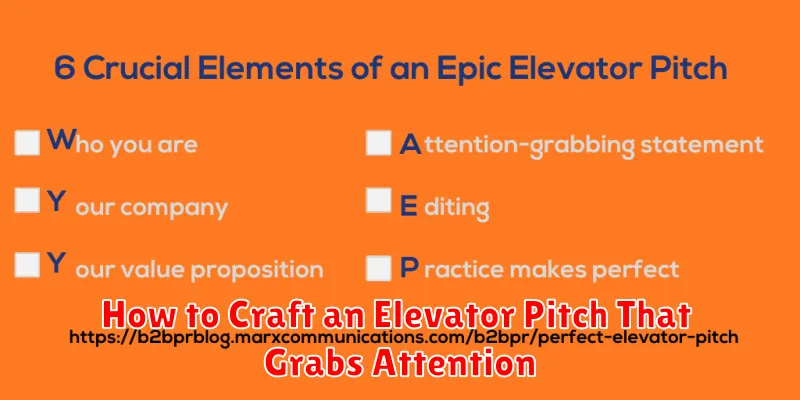In today’s fast-paced business world, capturing someone’s attention quickly is crucial. A well-crafted elevator pitch can be the key to unlocking opportunities, whether you’re seeking funding for your startup, networking at an industry event, or simply trying to make a memorable first impression. This article will provide you with a comprehensive guide on how to create an elevator pitch that not only grabs attention but also effectively communicates your value proposition.
Learning how to craft a compelling elevator pitch is an essential skill for entrepreneurs, job seekers, and anyone looking to make a strong professional impact. A concise and persuasive elevator pitch can spark interest, generate leads, and open doors to new possibilities. From defining your target audience to structuring your message and practicing your delivery, this guide will equip you with the tools you need to deliver an elevator pitch that leaves a lasting impression. Master the art of the elevator pitch and unlock your potential to connect with and influence others effectively.
What Is an Elevator Pitch?
An elevator pitch is a brief, persuasive speech that you use to spark interest in yourself, your product, or your company. It should be short enough to deliver during a short elevator ride (hence the name), typically 30 to 60 seconds.
The goal of an elevator pitch isn’t to close a deal, but rather to generate interest and open a dialogue. A successful elevator pitch leaves the listener wanting to know more and provides a clear path for continuing the conversation.
It’s a powerful tool for networking events, job interviews, and chance encounters with potential investors or clients. By concisely communicating your value proposition, you can make a lasting impression and open doors to future opportunities.
Understanding Your Audience
Before crafting your elevator pitch, identify your target audience. Who are you speaking to? Are they potential investors, customers, or partners? Knowing your audience informs your word choice, tone, and the overall message.
Consider their level of familiarity with your industry. Technical jargon might impress experts but confuse others. Focus on the value proposition you offer and how it directly benefits them.
Tailoring your pitch to different audiences demonstrates preparedness and maximizes impact. A generic pitch rarely resonates.
The Core Elements: Who, What, Why
Crafting a compelling elevator pitch requires a concise and focused message. This boils down to clearly defining three core elements: who you are, what you do, and why it matters.
Who: Briefly introduce yourself and your role. This establishes context and helps the listener understand your perspective. For example, “I’m a software engineer specializing in AI development.”
What: Describe the product or service you offer. Focus on the core value proposition and avoid technical jargon. For instance, “I develop AI-powered solutions that automate complex tasks, increasing efficiency for businesses.”
Why: Explain the benefit or problem you solve. This is crucial for grabbing attention and demonstrating value. Highlight the impact of your work. For example, “Our solutions reduce operational costs by 20% and improve decision-making accuracy.”
Adding a Strong Hook or Question
A compelling elevator pitch needs a strong hook to immediately grab the listener’s attention. This could be a provocative question, a surprising statistic, or a bold statement. The goal is to pique their curiosity and make them want to hear more.
Questions are particularly effective as they engage the listener directly. A well-crafted question forces them to think and consider your proposition. For example, instead of stating what your company does, ask a question related to the problem your company solves.
Statements can also be effective hooks. Start with a bold claim about your business or the industry you operate in. This demonstrates confidence and expertise, making your pitch more memorable.
Choosing the right hook depends on your target audience and the context of your pitch. Regardless of your chosen approach, ensure it’s relevant to your business and leads naturally into your value proposition. A strong opening sets the stage for a successful pitch.
Keeping It Concise and Conversational

Brevity is key in an elevator pitch. Aim for a timeframe of 30-60 seconds. Imagine delivering your pitch during a short elevator ride. This limited timeframe demands concise and impactful language.
While maintaining professionalism, adopt a conversational tone. Avoid overly technical jargon or complex sentences. Clarity is paramount. Speak as if you’re explaining your idea to a friend, using natural language that is easy to understand.
Practice delivering your pitch aloud to refine its flow and ensure it sounds natural and engaging. Practice makes perfect, especially when aiming for a concise and conversational delivery.
Practicing With Feedback
Practice is crucial for perfecting your elevator pitch. Rehearse it aloud repeatedly to become comfortable with the flow and timing.
Don’t practice in isolation. Seek feedback from trusted colleagues, mentors, or friends. Ask them for honest critiques on clarity, conciseness, and impact.
Pay attention to their reactions. Do they seem engaged? Do they understand your message? Use their feedback to refine and polish your pitch until it’s clear, compelling, and memorable.
Tailoring for Different Contexts
A key aspect of an effective elevator pitch is its adaptability. Your pitch should resonate with different audiences and in various situations. Consider the context and tailor your message accordingly.
When networking at a formal industry event, your pitch should be concise and professional, highlighting your key accomplishments and career goals. In contrast, a casual conversation at a social gathering might call for a more relaxed and engaging approach, focusing on your passions and broader interests.
Similarly, when speaking to a potential investor, emphasize the value proposition and potential return on investment. When speaking to a potential client, focus on how your skills and experience can solve their specific needs. Adaptability is crucial for maximizing the impact of your elevator pitch.
Using It for Networking and Pitches
Networking events are prime opportunities to utilize your elevator pitch. Approach individuals, offer a firm handshake, and deliver your concise and compelling introduction. Remember to actively listen to their responses and engage in a genuine conversation.
Formal pitches, such as those presented to investors or potential clients, also benefit from a well-crafted elevator pitch as an opening. It provides a strong initial impression and sets the stage for a more detailed presentation. Be prepared to expand on any point raised in your initial pitch.
Practice adapting your elevator pitch to different audiences and situations. Tailoring the content to the specific context will make it more effective and resonate stronger with your listeners.
Avoiding Overcomplication
A common pitfall in crafting an elevator pitch is overcomplicating the message. Simplicity is key to making your pitch memorable and easily understood. Avoid using jargon, technical terms, or overly complex explanations. Focus on conveying the core value proposition in a clear and concise manner.
Imagine explaining your business to someone with no prior knowledge of your industry. Clarity is crucial. Use everyday language that everyone can grasp. This will ensure your audience remains engaged and understands the essence of your pitch without getting lost in the details.
Memorable Pitch Examples

Examining successful pitches can provide valuable insights for crafting your own. Here are a few examples illustrating different approaches:
Example 1: Problem/Solution Focus
“Tired of cold coffee? The HotSpot mug keeps your beverage at the perfect temperature for hours, using innovative thermal technology. No more microwaving or lukewarm disappointments.”
Example 2: Benefit-Driven
“Imagine closing deals 20% faster. Our CRM software streamlines your sales process, automating key tasks and providing actionable insights. Boost your productivity and revenue with ease.”
Example 3: Intriguing Question
“What if you could learn a new language in just 15 minutes a day? Our app uses a proven method based on cognitive science, making language acquisition fun and efficient. Start speaking confidently today.”

